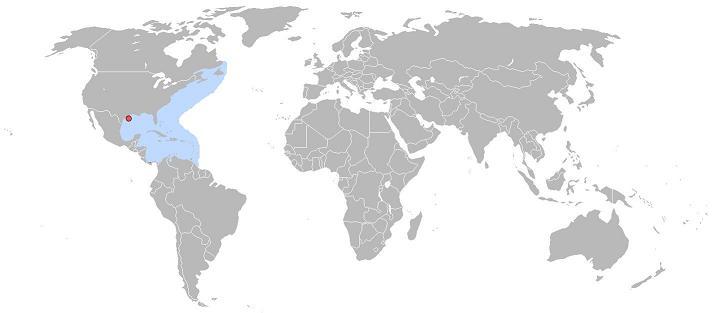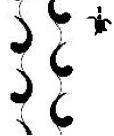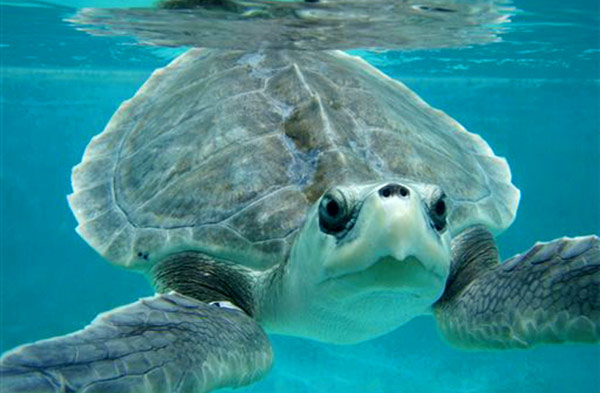Kemp’s Ridley (Lepidochelys kempii)
Common Name:
Kemp’s Ridley – named Kemp’s after Richard Kemp, who helped discover and study the turtle. No one is sure why it is called ridley, possibly due to having similar nesting behavior as the olive ridley.
Scientific Name:
Lepidochelys kempii
Description:
Kemp’s ridley is the rarest sea turtle and is listed as critically endangered. It is one of two living species in the genus Lepidochelys (the other one being L. olivacea the olive ridley sea turtle). Head is moderate and triangular in size. Carapace is bony without ridges and has large, non-overlapping scutes (scales) present. Carapace has 5 lateral scutes and is very rounded. Front flippers have 1 claw, while the rear flipper has 1 or 2 claws. Adults have a dark grey green carapace with a white or yellowish plastron, while the hatchlings are jet black.
Size/Weight/Age:
The Kemp’s ridley turtle is one of the smallest of the sea turtles, with adults reaching about .61 – .94 meters (2 – 3 ft) in length, weighing up to 45 kilograms (99 lb) and have a lifespan of 30 – 50 years.
Diet:
They have powerful jaws that help them feed on crabs, which are their favorite food, and other shellfish: clams, mussels, and shrimp. They also like to eat fish, sea urchins, squid and jellyfish.
Habitat:
The major habitat for Kemp’s ridleys is the nearshore and inshore waters of the northern Gulf of Mexico, especially Louisiana waters. Kemp’s ridleys are often found in salt marsh habitats. The preferred sections of nesting beach are backed up by extensive swamps or large bodies of open water having seasonal narrow ocean connections.

Reproduction:
Female Kemp’s Ridley Turtles, between the age of 7 to 15, will usually mate every 1 to 3 years.
 Crawl Pattern:
Crawl Pattern:
- Alternating comma-shaped flipper marks
- Wavy and smoothed track center with no thin, straight, and well-defined tail-drag mark
- No regular marking from front flippers at the margins of the track
Nesting:
Female Kemp’s Ridleys swarm to mass nesting emergences, known as arribadas or arribazones (Spanish for “arrival”), to nest during daylight hours. They will nest 2 – 3 times each season, 10 to 28 days between nestings, clutch size average of 110 eggs and the eggs incubate for about 45 to 70 days.
Status:
U.S. – Listed as Endangered (in danger of extinction within the foreseeable future) under the U.S. Federal Endangered Species Act.
International – Listed as Critically Endangered (faces an extremely high risk of extinction in the immediate future) by the International Union for Conservation of Nature and Natural Resources (IUCN).
Threats to Survival:
The greatest threat to the Kemp’s Ridley is from human use activities including collection of eggs and killing adults and juveniles for meat and other products. The significant decline in the number of Kemp’s Ridley nests was a result of high levels of incidental take by shrimp trawlers.

